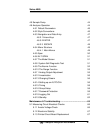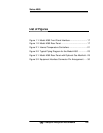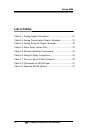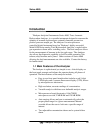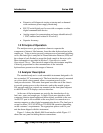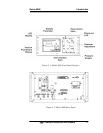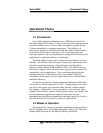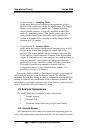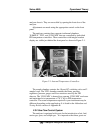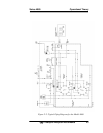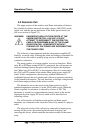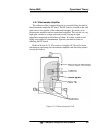
Series 4060 Operational Theory
Teledyne Analytical Instruments 19
Operational Theory
2.1 Introduction
Series 4060 Analyzer for Benzene uses a FID detector and a Gas
Chromatograph (GC) Column. Using a carrier gas and a microprocessor
actuated switching valve, a fixed volume of sample is pushed into the
Column maintained at a constant temperature. The eluted gas is
analyzed for benzene in a FID detector and the column is back flushed
to accept the fresh sample in the next cycle. Actual separating and
detecting sequence may vary depending on compounds of interest in the
application for which the analyzer is configured.
The Series 4060 Analyzer uses a flame ionization detector to sense
benzene. The FID was selected based on the positive performance and
extensive experience in the use of this detector in other Teledyne
analyzers namely Model 402R and Model 4020. The FID has proven
itself to be a rugged, stable, long life sensor giving years of trouble free
operation in various applications. Also considering the fact that the
required sensitivity of 100 ppb full scale was achieved, FID was
considered a better choice over the limited life and less reliable Photo
Ionization Detector.
A stainless steel packed column containing Chromosorb Diatomite
was used at a constant temperature of 70 C. Using nitrogen as a carrier
gas and a 5 ml sample loop, benzene elutes from the column within a
few minutes. Additionally, a clear separation is observed from other
aromatic hydrocarbons, namely toluene, ethyl benzene, and xylenes. The
actual temperature setpoint and compound separation for your
instrument may be different depending on the application. It is listed in
the Addendum and Testing Results section of Appendix B.
2.2 Modes of Operation
The analyzer has 2 modes of operation depending on the position of
the GC Sampling Valve (See Piping Diagram in Figure 2-2). They are:
Sample Mode (position A) and Analysis Mode (position B).



